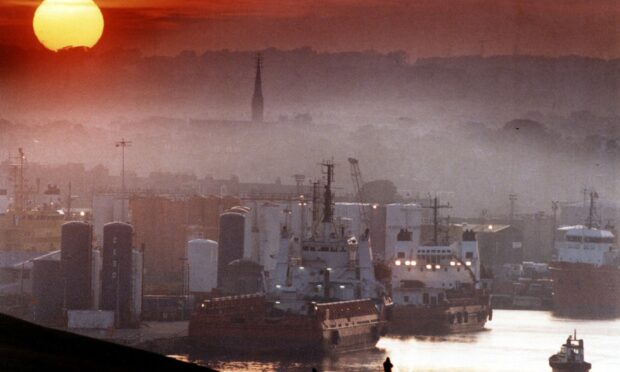There was a time, not so long ago, when the shift to a sustainable economy – and a world less reliant on oil and gas – posed an existential threat to the north-east economy.
Over the decades we have been the grateful custodian of the UK’s world-leading energy sector. But the prosperity it has brought us, built on a finite resource, has always left us feeling a little exposed.

Most feared, or were in denial, that one day the sun would set on the sector, taking tens of thousands of jobs with it. You don’t need to look far in Scotland or the UK to find examples of the economic havoc this type of industrial decline can usher in.
However, things have changed. That cliff-edge now feels like a new dawn; one with longevity.
From cliff-edge to new dawn
The regional partnership convened to bring green freeport status to Aberdeen and Peterhead has unearthed a global appetite to build a sustainable new economy here.
And that includes bringing sustainability to sectors where net zero seemed impossible a few years ago.
For example, a green freeport in the north-east could play a significant role in decarbonising the aviation industry – by delivering a sustainable aviation fuel (SAF) plant that would create up to 920 jobs and £133 million in GVA (gross value added) per year.
The creation of a SAF facility at St Fergus is a key part of the North East Scotland Green Freeport bid which has a wider focus on investing in sustainable fuels to support the UK’s decarbonising transport strategy.
Derived from sustainable feedstocks such as household and post-recycling municipal waste, agricultural and forestry residues, SAF generates carbon savings of upwards of 70% compared to fossil jet fuel.
A report commissioned by industry body Sustainable Aviation concluded a UK SAF industry could deliver £2.9 billion annually to the UK economy, and create 20,200 clean growth jobs in SAF production and export services, with UK production saving 3.6 million tonnes of CO2 annually by 2038.
Driving a domestic SAF sector with the North East Scotland Green Freeport would put the UK at the forefront of world-leading aviation climate solutions. It would create thousands of clean growth jobs and provide a significant UK export opportunity as aviation decarbonises globally.
The next energy boom
A big prize. Add to this the possibility of this region playing host to a direct air capture (DAC) plant and you can see the role we will play in tackling the climate crisis.
Plans continue to move ahead for the north-east to be home to a facility using cutting-edge technology to capture massive amounts of carbon dioxide directly out of the atmosphere.
CO2 removed from the air will then be permanently stored in depleted offshore oil and gas fields in the North Sea.
The project is being developed by UK decarbonisation developer Storegga in partnership with Canada’s Carbon Engineering, which is pioneering commercial-scale DAC technology.
And the North Sea could also be used to sequester carbon from the UK’s largest steelworks in Port Talbot.
Tata Steel is committed to cutting its impact on the environment and climate change, and the Carbon Capture and Storage Research Centre says new technology will allow the plant to make low or zero carbon steel beyond 2050.
They add that CCS would take two to three years to implement, and cost between £500m and £1bn.
It is understood the depleted reservoirs of the North Sea will become their ultimate destination.
So there you have it. Where decline once stared us in the face, a fresh opportunity for prosperity now resides.
The next energy boom in this region will not be followed by bust. It will be enduring. It will be sustainable.
Russell Borthwick is chief executive of Aberdeen and Grampian Chamber of Commerce.

Conversation